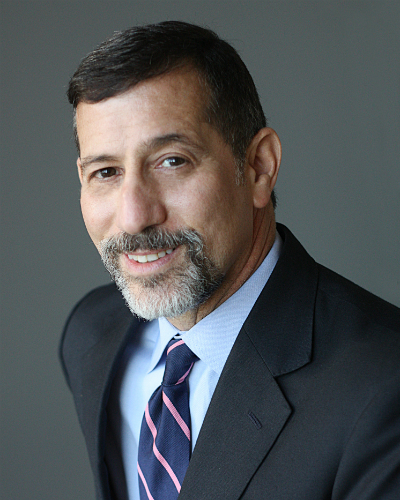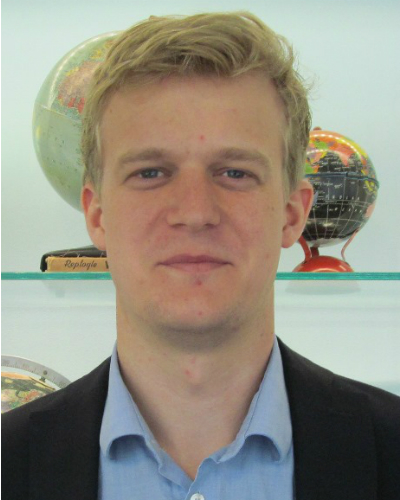Incels: America’s Newest Domestic Terrorism Threat
Law-enforcement and counterterrorism agencies need to recognize a real and growing threat.
Published by The Lawfare Institute
in Cooperation With

Editor’s Note: The involuntary celibate (incel) movement might seem to be just another sad online community, but strands of it have turned violent, committing repeated attacks that are best described as terrorism. Bruce Hoffman and Jacob Ware of the Council on Foreign Relations provide an overview of the incel movement as it stands today and argue that it has numerous characteristics that make it especially dangerous.
Daniel Byman
***
Shortly after the May 2014 Isla Vista shooting, in which a gunman opened fire outside a University of California, Santa Barbara, sorority house, a chilling video circulated on social media. The attacker, 22-year-old former student Elliot Rodger, bluntly declared his motivation: “If I can’t have you girls,” he said, “I will destroy you.”
As has now become a fixture of mass shootings both in the United States and abroad, the gunman emailed his 107,000-word manifesto, titled My Twisted World, to 34 addresses in order to both presage and publicize the attack. The manifesto, which was widely quoted in news reports, revealed the existence of an aggressive, hateful and rapidly proliferating online community of young men frustrated at their inability to find sexual partners. They call themselves “incels”—a portmanteau for “involuntary celibate.”
The term is derived from a website created by a female undergraduate student at Canada’s Carleton University in 1993, eponymously named Alana’s Involuntary Celibacy Project. Although it was originally conceived as a site where lonely individuals of both sexes could meet, exchange experiences, and provide support, both the concept and its online manifestation were taken over by men complaining about their own involuntary celibacy and debating the causes behind their frustrations. Rodger was among those who adopted the “incel” label. Indeed, he is now considered by fellow incels to be their movement’s “patron saint”—a cultural touchstone and inspirational figure—to be imitated and emulated.
The incel ideology, as such, rails against “Stacys,” the idealized women they desire but believe deny them sex, as well as “Chads,” the similarly idealized males who are assailed for corralling all the apparently best women for themselves. Five years ago, these incels congregated on websites including PUAHate.com (“PUA” stands for pick-up artist); now, they trawl Reddit, 8chan and its replacement 8kun, and have also created their own forums and moved to the dark web.
The incel ideology is real—and lethal. In the deadliest incel-linked attack to date, in April 2018, 10 pedestrians were killed in a vehicle-ramming attack on Toronto’s busy Yonge Street. Other deadly attacks that have cited incel ideology or inspiration have occurred at Umpqua Community College in Roseburg, Oregon, in October 2015; Aztec High School in Aztec, New Mexico, in December 2017; Marjory Stoneman Douglas High School in Parkland, Florida, in February 2018; and the Tallahassee Hot Yoga studio in Tallahassee, Florida, in November 2019. The death toll in the United States and Canada now stands at nearly 50 people. And incel ideology has spread to Europe, although it has yet to inspire, at least directly, any deadly attacks.
Accordingly, there are reasons to believe that the incel movement, and the terrorism threat it poses, are both here to stay and a matter to be taken seriously. First, this violence is indisputably terroristic in that it seeks to repress and subjugate women as part of the incels’ vision of a paternalistic, genderized society. As J.M. Berger argues, statements issued by incels showcase “all the standard components of extremist belief, including an in-group (the group to which an extremist belongs, in this case, the sexually deprived incels) and an out-group (the group targeted by the extremist group, in this case, Chads and Stacys, which translates from incelspeak as people with normal sex lives).” Berger also disputes the dismissal of incel violence as perpetrated by “obviously troubled” or mentally ill young men—even in cases where mental health issues are confirmed, ideology plays a role and the terrorism label is still applicable. By advocating bloodshed as a means of broader societal intimidation, incel ideology conforms to the core definition of terrorism as violence designed to have far-reaching psychological effects.
Second, the incel movement has benefited from the same social mobilization and online communication tools that have propelled the Islamic State and violent far-right extremists to increasing prominence and attention. With just a Google search, curious outsiders can discover an entire online world populated by incels, complete with their own sites, language and culture. Once there, initiates are exposed to a variegated menu of extremist topics, propagated by forum dwellers eager to radicalize newcomers.
Relatedly, the threat posed by incels is growing harder to ascertain, because increased law enforcement and media attention has forced the movement into darker and more private online locales. Public forums today, while still unambiguously misogynistic in their rhetoric, now rarely advocate violence as brazenly as they once did; they are relatively effectively self-policed by site administrators. Fringes of the movement have migrated to smaller, less-policed sites, including Telegram, the encrypted app favored by the Islamic State and other terrorist groups, and Discord, the popular gaming site.
Third, the fact that incel violence has come from breakaway lone actors rather than organized groups represents a formidable challenge to law enforcement efforts to interdict and prevent the violence espoused by the ideology’s proponents. Like most violent far-right and modern jihadist terrorism, incel violence has not been dictated by leaders of an identifiable network who design a plot and finance and train the attackers. Without any kind of traditional command-and-control apparatus, these incel attacks have instead been conceived by individuals who design and execute their plots alone. In this lone actor model, it becomes nearly impossible for law enforcement agencies to interdict would-be attackers and stop the violence before it occurs—as we have seen with terrorists inspired by the Islamic State. In most cases, the perpetrators leave no traceable footprint online until they post their manifestos or digital attack advertisements—and when they do, they are easily drowned out or overwhelmed by an army of “shitposters,” who enjoy spreading increasingly extreme and often violent rhetoric through their anonymous online profiles but rarely have any intention of committing attacks in the real world.
Fourth, the incel movement should be of grave concern because of its increasing intermingling with violent far-right extremists and their own bedrock talking points of hatred and intolerance. Rodger’s manifesto was not only virulently misogynistic; it was also racially charged. Since its publication in 2014, the incel movement has been infiltrated by far-right extremists, who see so-called “men’s rights activism” as a common ground. Male supremacy thus has gone hand-in-glove with white supremacy. As such, the increasing spread of extremist far-right views online and the success of far-right terrorists in launching major attacks from El Paso to Pittsburgh will likely continue to embolden incels.
In addition, like their far-right counterparts, some incels may have benefited from prior military service. Indeed, four of the six incel attackers cited here had some degree of military experience, and at least one other incel attack (in which only the gunman was killed) involved a U.S. Army veteran who opened fire outside a Dallas courthouse. In this respect, even those who left military service prematurely may nonetheless have used the weapons training they received in their attacks.
Finally, the incel movement’s rise is concerning because of its accessibility. This is not an ideology that requires training in arcane religious doctrine or indoctrination through complex political texts. Instead, it plays off emotions and frustrations experienced daily by young men around the world, and it appeals more effectively to individuals who are simply angry or lonely than to those with preexisting extremist tendencies. The incel ideology co-opts these feelings of isolation and sexual frustration and then weaponizes them into a hateful ideology that attacks women, men, and, in some instances, minorities and individuals with mental illness. And, with its online presence, a catalog of incel chatrooms is only a few clicks away for anyone with an internet connection. Compared to Islamism or white supremacism, inceldom is an ideology that any young man, in any community, could fall into—and become deeply enmeshed.
Perhaps the most challenging aspect of the incel movement’s mobilization to violence is that there are no obvious legal measures or counterterrorism intelligence initiatives available. The movement is completely decentralized, without any hierarchy or leaders, and therefore no targetable offline organizing or funding streams. It is also difficult to identify and enlist persons with similarly extremist views but who eschew violence to serve as interlocutors, as is done with other programs to counter violent extremism—although Alana, the Canadian female founder of the early involuntary celibate communities, is trying. Domestic law enforcement agencies cannot of course legally track online speech or police language—and, even so, incels pride themselves on their aforementioned penchant for “shitposting.” Policing social media forums and their content might potentially risk creating new monitoring problems by forcing incels into the darker web, where oversight is more difficult and violent rhetoric can more safely be propagated.
Moreover, the fact that, as Berger notes, many incels themselves claim to be suffering from psychological issues such as depression or evidence some degree of autism suggests the need for more proactive intervention from therapists and other mental health professionals. But, this is more easily said than done, as journalist Aja Romano, who has studied incels, notes. “Outreach for incels shouldn’t start with enabling the community’s violent misogyny or its collective sense of entitlement to the bodies and emotional support of women,” Romano argues. “It should start with improving men’s access to mental health treatment—and, crucially, their faith that it can do them any good.”
Alongside the far-right and Islamist homegrown violent extremists, incels conform to an increasingly pervasive trend of terrorist attacks perpetrated by individuals without any connection to an existing organization with known leaders and an identifiable command-and-control structure. It is part of a broader rise of domestic terrorism threats—and needs to be taken equally seriously by law enforcement and the counterterrorism community before the movement continues to grow in size and threat.






